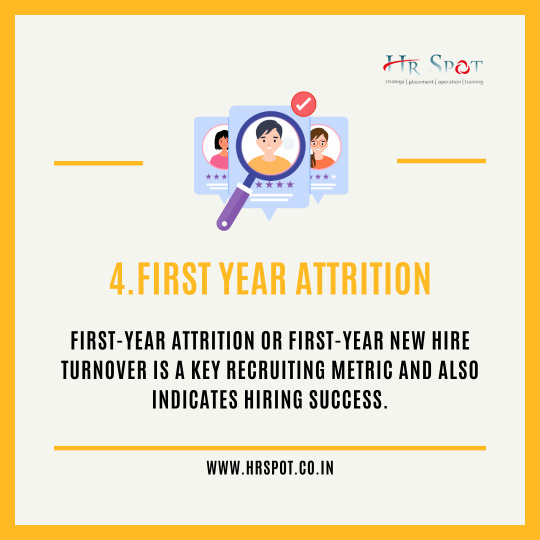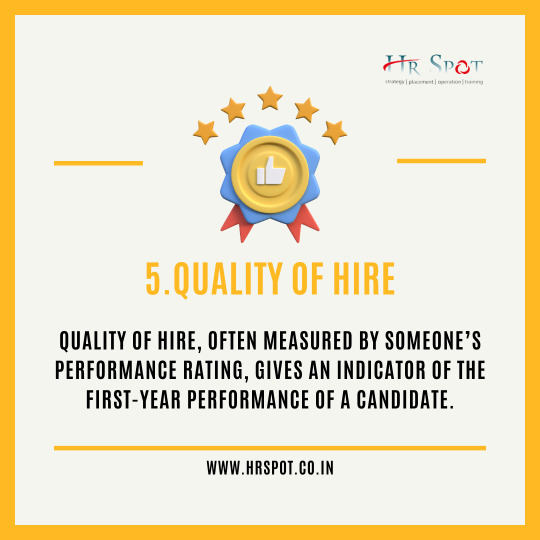#HRMetrics
Explore tagged Tumblr posts
Text
How to Use Data to Improve Employee Experience

Improving employee experience isn’t just about offering perks or flexible hours—it’s about understanding what employees need and acting on insights. HR teams now have access to powerful tools and HR metrics that help them analyze trends, identify pain points, and make smarter decisions. By using the right data, organizations can not only boost engagement and retention but also create a more productive and fulfilling workplace.
Let’s explore how you can leverage data to enhance the employee experience across various touchpoints.
1. Start with the Right HR Metrics
The foundation of a great employee experience lies in tracking the right HR metrics. These metrics help HR leaders understand what’s working and what needs improvement. Some of the key metrics to monitor include:
Employee engagement score
Turnover rate and reasons for exit
Absenteeism trends
Time to resolution for HR issues
Training participation and effectiveness
Internal mobility and promotion rates
By reviewing these data points regularly, HR can proactively address concerns, identify areas of disengagement, and personalize interventions based on specific teams or employee segments.
2. Use the 9-Box Grid for Talent Insights
The 9-box grid is a valuable tool in performance and potential analysis. It allows HR and managers to visualize where each employee stands—combining performance reviews with future potential. Typically, employees are categorized into nine segments, helping leadership identify:
High performers who are ready for leadership roles
Solid contributors who need upskilling
Low performers who require coaching or may not be the right fit
This grid isn't just for succession planning—it’s a great way to structure development plans, boost motivation, and ensure that the right people are in the right roles.
When integrated into a performance management system like Empxtrack, the 9-box grid becomes more than a spreadsheet. It offers real-time, dynamic insights that evolve with each review cycle, giving HR and managers the tools to take action quickly.
3. Make Year-End Reviews Meaningful with Data
Year-end reviews often feel like a routine checklist. But with the right data, they can become valuable moments of reflection and growth. Instead of relying only on manager feedback, HR systems can bring together performance metrics, peer reviews, goal progress, and even training history.
This helps employees feel that the review is fair, data-backed, and future-focused. When employees see that their efforts are recognized with evidence, it increases trust and transparency—key drivers of a positive employee experience.
Empxtrack, for example, helps digitize and automate performance reviews, offering dashboards and analytics that make it easier to compare self-assessments with manager ratings and drive focused development conversations.
4. Strengthen Performance Management with Continuous Feedback
Traditional annual reviews are slowly being replaced by continuous performance management models. These include regular check-ins, real-time feedback, and short-term goals (OKRs or KPIs). With this approach, employees receive guidance when they need it—not months later.
Data plays a crucial role here. Tracking performance trends over time, feedback frequency, and coaching sessions can help managers identify when an employee is stuck, stressed, or thriving. It also reduces bias and gives a fuller picture of each person’s contributions.
5. Use Predictive Analytics to Prevent Attrition
High employee turnover is one of the biggest threats to a healthy workplace. But often, the warning signs—like lower engagement, poor performance, or reduced participation—are visible in the data well before an employee decides to leave.
By using predictive analytics, HR can identify at-risk employees and take preventive measures. This might include having one-on-one conversations, adjusting workloads, or offering internal mobility opportunities.
Conclusion
Improving employee experience isn’t just about intuition—it’s about informed decision-making. By leveraging HR metrics, tools like the 9-box grid, and smarter performance management strategies, companies can turn data into action. Platforms like Empxtrack make it easier to track these insights and align them with year-round employee engagement strategies, including year-end reviews and goal tracking.
1 note
·
View note
Text
The Strategic Partner: Redefining the Role of HRM in Organizational Success
The Strategic Partner in Human Resource Management (HRM) refers to the evolving role of HR professionals as integral contributors to an organization's overall strategy and success. This concept signifies a departure from traditional views of HR as merely an administrative function focused on compliance and personnel management. Instead, HR is seen as a vital ally in achieving business goals and driving organizational performance.

The field of Human Resource Management (HRM) has experienced a profound evolution, shifting from a traditional administrative function to a strategic partner that actively contributes to organizational success. Once primarily focused on compliance and employee relations, HRM has transformed into a key player in driving business objectives, supporting innovation, and fostering sustainable growth. This essay explores the critical characteristics of HRM as a strategic partner, the tangible benefits it brings to organizations, and real-world examples that illustrate HR’s role in transforming business landscapes.
Key Characteristics of a Strategic HR Partner
To fulfill its role as a strategic partner, HRM has embraced several key characteristics that align it closely with core business strategies, including:
Aligning HR Strategies with Business Objectives A strategic HR partner integrates HR goals with the broader goals of the organization, ensuring that human capital strategies actively contribute to long-term objectives. This alignment allows HR to proactively support business growth by recruiting, developing, and retaining the right talent to drive success. For instance, HR can help identify future skills essential to business expansion and design training programs to develop those skills within the workforce.
Fostering a Culture of Innovation and Collaboration Strategic HRM actively promotes a workplace culture that encourages creativity, risk-taking, and teamwork. By developing programs that support cross-functional collaboration and recognizing employee contributions, HR can cultivate an innovative environment that adapts to change and fosters continuous improvement.
Developing and Implementing Data-Driven HR Initiatives The modern HR function relies on data and analytics to make informed decisions. By tracking metrics such as employee engagement, turnover rates, and performance data, HRM can identify trends, address potential challenges, and evaluate the impact of HR strategies. These insights allow HR to adjust practices based on evidence, increasing their effectiveness and ensuring HR initiatives contribute to organizational goals.
Providing Expert Guidance on Talent Management and Development A strategic HR partner invests in talent management as a core function, encompassing recruitment, development, performance management, and succession planning. This approach ensures that the organization has a robust pipeline of skilled employees ready to fill critical roles, minimizing disruptions and enabling sustainable growth.
Driving Organizational Change and Transformation In today’s fast-paced business environment, organizations must continually evolve to stay competitive. Strategic HRM plays a vital role in change management by leading initiatives that prepare the workforce for transitions, such as digital transformation, restructuring, or cultural shifts. By facilitating communication and training during periods of change, HR helps employees adapt smoothly, ensuring that transformation efforts are successful and aligned with business goals.
Benefits of a Strategic HR Partner
The shift to a strategic HRM model brings a range of advantages that impact both organizational performance and employee satisfaction. Key benefits include:
Enhanced Business Outcomes Through Aligned HR Strategies By aligning HR strategies with business goals, HRM contributes directly to improved organizational performance. When HR initiatives support core objectives, the organization can optimize workforce productivity, reduce turnover, and achieve financial targets more effectively.
Improved Employee Engagement and Retention Engaged employees are more likely to stay with the company and contribute positively to its success. Strategic HRM enhances engagement by implementing programs that support employee well-being, recognize achievements, and provide career development opportunities. High engagement leads to lower turnover, saving costs related to recruiting and onboarding and retaining valuable institutional knowledge.
Increased Innovation and Competitiveness Organizations with a strategic HRM approach are better positioned to foster innovation. HRM initiatives such as talent development, cross-functional teams, and continuous learning create an environment where employees feel empowered to generate new ideas. This culture of innovation helps organizations respond to market changes quickly and maintain a competitive edge.
Better Decision-Making Through Data-Driven Insights The use of HR analytics allows for evidence-based decisions in areas such as hiring, employee development, and retention. This data-driven approach enables HR to predict workforce needs, tailor engagement initiatives, and track the effectiveness of various programs, allowing for agile and precise responses to evolving organizational needs.
Effective Talent Management and Development As a strategic partner, HRM helps organizations manage talent proactively. By focusing on development and succession planning, HR ensures that employees are prepared to take on new responsibilities as the business grows. Effective talent management improves continuity, reduces the need for external hiring, and allows for greater adaptability within the workforce.
Case Studies
The transformation of HR into a strategic partner is evident in several leading companies that have leveraged HRM to achieve substantial organizational change and growth:
IBM's HR Transformation into a Strategic Partner IBM has long been a leader in integrating HR with strategic goals. In recent years, the company has utilized data analytics to understand workforce trends and drive key decisions related to employee engagement, retention, and talent acquisition. By embedding HR in the decision-making process, IBM’s HR department has become an essential partner in fostering innovation and guiding the company through periods of transformation.
Google's Innovative Approach to HR and Talent Management Google is renowned for its forward-thinking HR practices, which focus on attracting top talent, fostering a collaborative culture, and providing employees with the resources to succeed. Google’s People Operations team uses data-driven insights to refine hiring practices, increase engagement, and support employee well-being. This strategic approach has allowed Google to maintain a competitive edge by nurturing a highly motivated and innovative workforce.
The Role of HR in Driving Cultural Change at Microsoft Microsoft’s recent cultural transformation was heavily influenced by its HR team. Under CEO Satya Nadella’s leadership, Microsoft shifted from a “know-it-all” to a “learn-it-all” culture, with HR playing a key role in fostering openness, adaptability, and continuous learning. This cultural shift helped Microsoft attract new talent, enhance collaboration, and drive innovation, allowing the company to re-establish itself as a technology leader.
Conclusion
The evolution of HRM from an administrative role to a strategic partner marks a paradigm shift in how organizations view the value of human capital. By aligning HR strategies with business objectives, fostering innovation, and providing guidance on talent management, HRM has proven to be essential in achieving organizational success. Case studies from companies such as IBM, Google, and Microsoft demonstrate the tangible impact that a strategic HR approach can have on culture, productivity, and competitive advantage. As the business landscape continues to evolve, HRM’s role as a strategic partner will only become more crucial in helping organizations adapt, grow, and thrive. In the future, HR will be indispensable in driving sustainable growth, innovation, and success by ensuring that human capital remains a key asset in achieving organizational goals.
#HRReimagined#FutureOfWork#DigitalHR#HRInnovation#PeopleManagement#CultureTransformation#BusinessGrowth#StrategicPlanning#HRLeadership#OrganizationalDesign#TalentDevelopment#SuccessFactors#HRMetrics#Analytics#InsightfulHR
0 notes
Text











Want to refine your recruitment strategies? Consider these top 6 HR metrics as key indicators for optimizing your recruitment process:
1. Cost per Hire
2. Time to Fill
3. Quality of hire
4. Employee Growth rate
5. Employee Turnover Rate
6. Diversity ratios
Ready to make smart hiring decisions?
Try out our HireME ATS and see the difference. Book your 15-day free trial now: https://www.hireme.cloud/contact-us
#HireME#applicanttrackingsystem#atssoftware#recruitment#metrics#recruitmentmetrics#talentacquisition#hiringmetrics#recruitmentstrategies#hrtrends#hrmetrics#hiringsuccess
1 note
·
View note
Text
🔍 Unlocking Insights with Human Resource Analytics

Human Resource Analytics holds the key to unlocking valuable insights within your organization's HR department. At Navigant, we bring a wealth of HR domain expertise and a strong foundation in statistics to the table, enabling us to delve deep into your HR data and uncover insights that go beyond the surface.
Our HR Analytics practice follows a meticulous process, starting with understanding your organization's unique data points. We then review and cleanse the data to ensure accuracy and reliability. Next, we interpret the data and draw meaningful inferences, generating comprehensive trend analysis reports that shed light on key HR metrics.
Ready to harness the power of data-driven HR insights? Connect with us today and embark on a journey towards optimizing your HR processes and driving business success!
Book A Meeting: https://meetings.hubspot.com/sonal-arora Contact us ☎ +91 93547 39641 ✉ sonal.arora@navigant.in Web: www.navigant.in
#Navigant#BPO#Outsourcing#HRAnalytics#DataDrivenInsights#NavigantTechnologies#HRMetrics#BusinessSuccess#EmployeePerformance#StrategicGoals
0 notes
Text
Are you prepared for the future of human resources? These top HR technology trends for 2024 will transform the way you manage your workforce
#hr#human resources#human resources management#talent management#hrm#talentmanagementmetrics#hrmetrics
0 notes
Text
Why and How to Track Recruitment Metrics
Recruiting the right talent has always been a strenuous task for companies irrespective of their size, brand, global presence, emoluments offered, etc. Most companies are adopting creative and value-driven recruitment strategies which are quite visible in most social media platforms. But are they really gauging the effectiveness of these efforts? This is something that we need to delve into further. Measuring recruitment effectiveness adds to the hassle since most companies are unsure on why and how to do the same.
If you can’t measure it, you can’t improve it
Create candidate experience:
This is a widely discussed topic nowadays since companies started realising the importance of the same. As per PWC reports, 49% of candidates turned down offers due to bad recruiting experience. Some of the reasons can be unclear communication, lack of timely response, etc. By understanding how to professionalize the recruitment process, companies can deliver an exceptional and ,engaging candidate experience.
Organizational reputation:
Most organizations use their brand name to attract top talent since there is an existing perception about assured job security, exceptional employee benefits, etc. A very few candidates would be willing to apply in companies they have never heard of. But the changing times have proved that even companies with a strong reputation of what they stand for, have started attracting the best talent. Tracking candidate perception about most notable factors like training opportunities, work life balance, culture, diversity and inclusion, etc. helps companies to develop strategies to reinforce the strengths and restore the weaknesses.
Optimize recruitment process:
Most candidates complain about the time taken for progressing into each recruitment step and the lack of an effective feedback mechanism. While analysing the timeline for recruitment of each role, we will be able to find out the exact reason for the same and bring in proper mechanisms to address the issue.
Channel recruitment efforts:
Companies come up with a variety of recruitment efforts which at times involve huge cost. But most of them are unsure on the impact it has created since the effort outcome is not tracked. Analysing the same can give a better idea on creating engaging ads, sources/top channels to attract quality candidates, target audience, candidate application pattern, etc.
Impact of changing times:
We are all going through a different phase of time since the outbreak of Covid, where complete virtual recruitment has become a new normal. How prepared companies were to tackle the situation in terms of technology, is still a question. This new normal is creating new trends across every function which is still an ongoing process. Companies need to foresee these trends and evolve to match the new expectations.
Diversity & Inclusion (D&I):
According to PWC reports, 62% of job seekers are more likely to apply for a job where a company is openly committed to improving diversity and inclusion in their workforce. D&I efforts need to be formulated and implemented based on the business goals which again needs to be tracked for better results.
Understanding the reasons for which we need to track the recruitment metrics is a stepping stone towards success in talent recruitment. There are a bountiful number of metrics which we can track to measure recruitment success. Let’s discuss a few of them which attributes directly to the cause we are working towards.
Recruitment metrics are of two types: Qualitative and Quantitative in nature. While qualitative metrics speak about tracking subjective information, quantitative metrics are more about representation using numbers.
Qualitative Metrics:
Source of hire: Companies need to track the source of each resume like whether the candidate applied through any job boards, referrals, social media platforms, etc. This data helps companies to identify where to focus their recruiting efforts like posting job ads, publishing engaging content, etc., to control recruiting costs and to implement the system effectively. Tips: Tracking each candidate source and analyzing the data is a strenuous task when done manually. So companies need to invest in a good recruitment automation platform which would automate the whole process, thereby delivering meaningful insights to the recruitment team.
Candidate Experience: Creating an exceptional candidate experience is one of the main focus areas for most companies in this present scenario. READ MORE........
#RecruitmentMetrics#HRAnalytics#TalentAcquisition#DataDrivenHiring#HRMetrics#RecruitmentKPIs#HRInsights#HiringData#StrategicRecruitment#RecruitmentAnalysis#MeasuringSuccess#TalentManagement#RecruitmentStrategy
0 notes
Text
35 Key HR Metrics with Examples, Formulas and Detailed Analytics
Human resources metrics are the KPI (key performance indicators) of HR. These are evaluated by HR professionals to assess the effectiveness of HR functions, operations, processes, and strategies.
Human resources metrics can help to compare the efficiency of HR operations to the expenses made. It gives an insight into the impact of the HR department in the organization, and the prevailing gaps in HR functions that may have adverse effects on the organizational well-being.
Read More: 35 Key HR Metrics with Examples, Formulas and Detailed Analytics
0 notes
Text
#PeopleAnalyticsRevolution#HRDataDriven#HRAnalytics#DataInHR#HumanResourcesInsights#DataDrivenHR#PeopleInsights#HRDecisionMaking#PeopleAnalyticsInnovation#HRTransformation#HRMetrics#DataScienceInHR#PeopleIntelligence#HRInsights#StrategicHR#HRDataAnalysis#PeopleStrategy#DataBackedDecisions#HRInnovation#HRAnalyticsInsights
0 notes
Text
This blog talks about the key performance indicators you must measure in 2023 to optimize your HR processes.

#HRProfessionals#HRMetrics#HROutsourcing#HRServices#EHRS#HumanResources#HRMetric#HRSolutions#HR#ExelaHRSolutions#HRProcesses
0 notes
Text
Chart Сenter | Lanteria HR Tutorials

Chart Center is a comprehensive collection of Lanteria HR tutorials that focuses specifically on utilizing the charting capabilities within the HR software. These tutorials provide step-by-step instructions and tips for creating and customizing charts, graphs, and visualizations to analyze HR data effectively. With Chart Center, HR professionals can gain valuable insights, track key metrics, and present data in a visually engaging manner. Enhance your data-driven decision-making and reporting capabilities with Lanteria HR tutorials from Chart Center.
#ChartCenter #LanteriaHR #DataVisualization #HRAnalytics #HRReporting #HRDataAnalysis #ChartsAndGraphs #DataDrivenDecisions #HRMetrics #DataVisualizationTools #LanteriaTutorials
0 notes
Text

This eBook clearly defines and categorizes the spectrum of #HRmetrics. Use this compilation to move quickly toward your #HR metrics solution and establish #talent analytics benchmarks.
Download this sample HR Metrics and formulas to start tracking today https://store.exitpro.com/product/talent-analytics-people-worth/
0 notes
Photo

HR Metrics Source | YouTube | WeSchoolVideos https://humanengineers.com/wp-content/uploads/2020/03/HR-V3-11.jpg https://humanengineers.com/hr-metrics/?feed_id=2362&_unique_id=6072b354c27df https://humanengineers.com/hr-metrics/?feed_id=2362&_unique_id=6072b354c27df
0 notes
Photo

Important HR Metrics an Organization Should Always Measure
· Average Rank of Various HR Functions
· Overall Workforce Productivity
· Percentage of Employee Engagement
· Manager Satisfaction with New Hires
· Turnover Within The First Year of Employment
· Cost of Employee Turnover in Key Roles
· Actual Cost Compared to Revenue
Learn More
0 notes
Text
https://www.articlebowl.com/top-9-key-metrics-to-manage-talent-managemnet-metrics/
Check out these Top 9 Key Metrics to Manage Talent. From retention rates to employee engagement scores, these metrics can help you optimize your company's performance & create a thriving workplace culture
#hr#hr professional#human resources#human resources management#hrm#employee#talent management#hrmetrics#talentmanagementmetrics
0 notes





